Colonial America was a time when things were simple and times were tough. Resources were scarce, and people had to use anything readily available if they wanted to survive. No one had the luxury of being picky about what they ate. Instead, they had to use every part of the animal, from its nose to its tail.
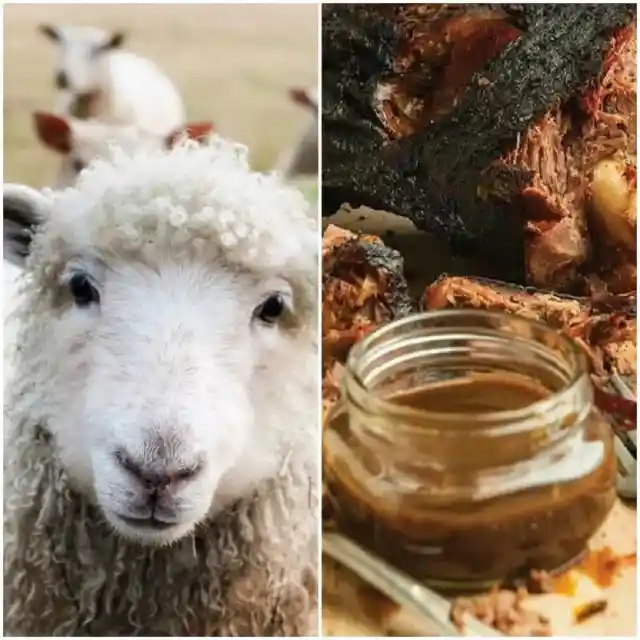
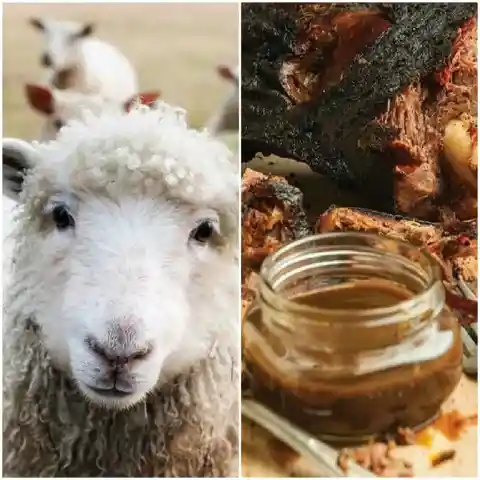
Given how frugal they had to be with their food, many of the things people ate back then would make our modern stomachs clench up. Surprisingly, some parts of the world still eat the same diet colonial Americans ate. Read on to discover what food items they prepared and how.
We hope you can stomach reading this article!
Beaver Tails
Though beavers are currently a protected species, they were heavily hunted and eaten during the 17th and 18th centuries. North American settlers hunted beavers for their pelts. However, hungry trappers made sure they used all the parts of a beaver as it was crucial to ensure nothing went to waste.
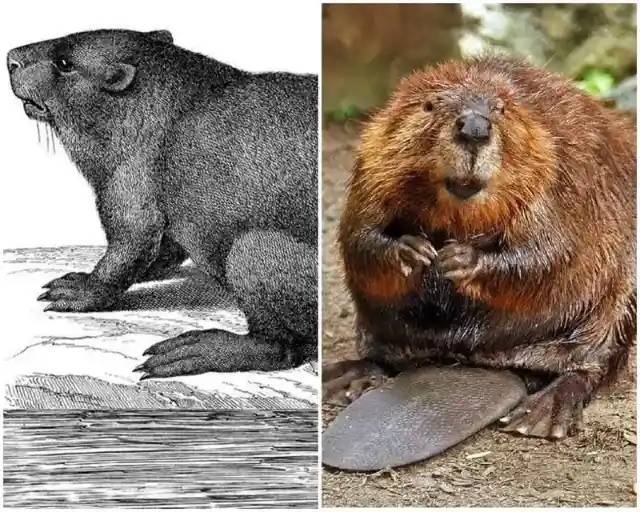
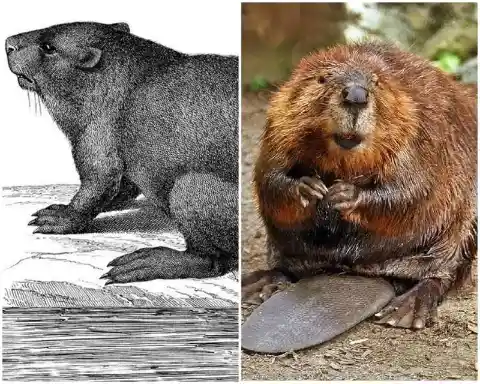
Beaver tails were cooked and eaten. Despite being primarily made of fat, these woodland creatures became known for their gamey flavor. Eventually, the tails proved as popular as the pelts from which they were cut.
A Pie Made of Eels
Very few people would want to eat an eel. But during colonial times, it was considered a delicacy. Eels were such a delectable dish that New England inhabitants used lobsters as bait to catch them. The meat of eels was consumed in many ways. The most famous? Eel pie.
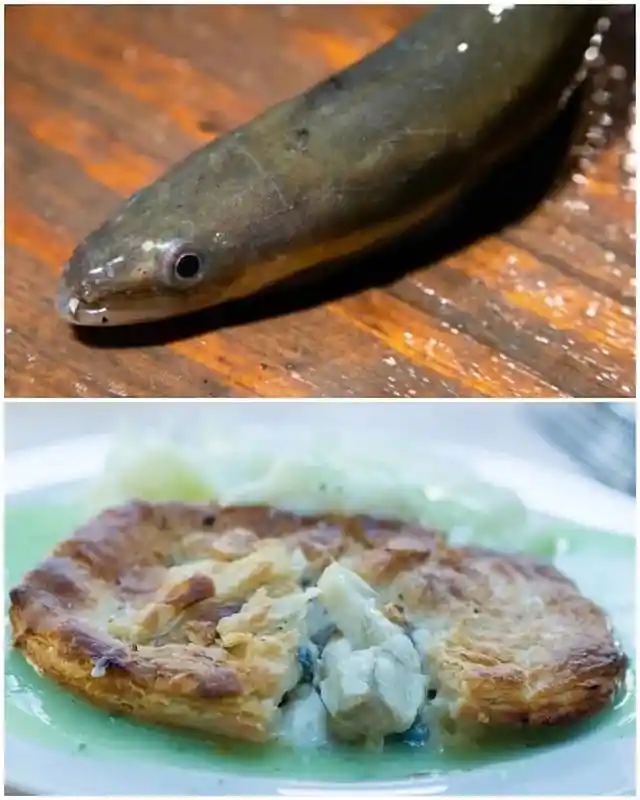
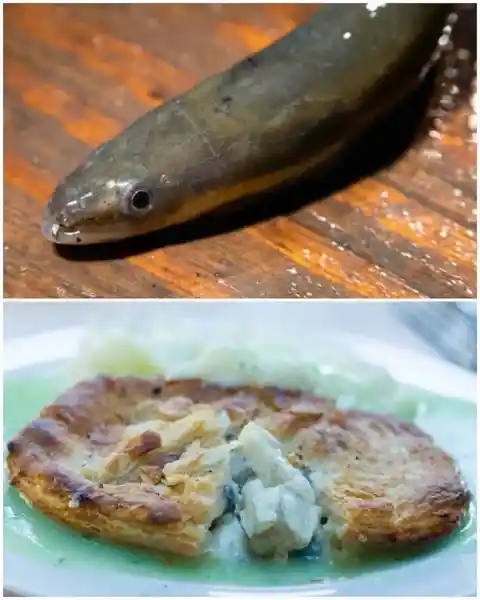
If you would like to try eel pie, it is still sold in London shops and in many parts of England. Feel free to try it out and savor something your great-great-great ancestors ate on special occasions.
Whale Vomit
Who would have thought whales vomit? To up the ante, who would have thought anyone would consider eating whale vomit? Believe it or not, this “delicacy” was a primary ingredient in numerous dishes eaten by the wealthy during the 17th and 18th centuries. They added it to eggs, beverages, and even hot chocolate.


Whale vomit is also known as Ambergris. It is considered a rare find because it is only produced by a small number of sperm whales. It can be found floating on the ocean surface and is still considered a valuable substance.
Weird Ice Cream Flavors
Ice cream was introduced to Colonial America in the 18th century. Around this time, locals started building ice houses to make and store frozen delicacies. Ice cream became such a popular dessert that dozens of delectable flavors were invented.
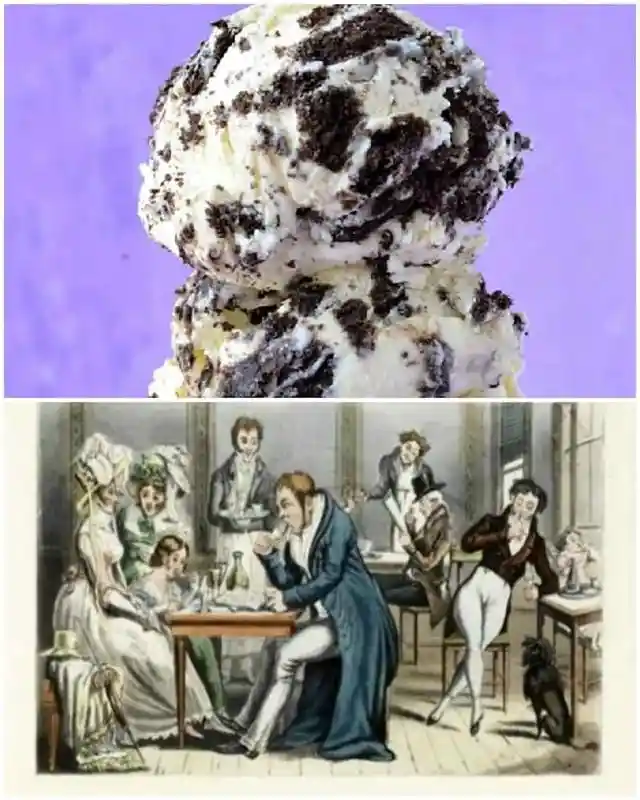
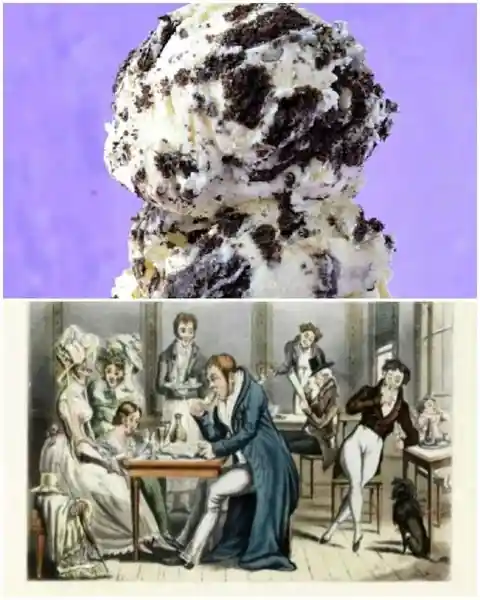
Initially, ice cream was not at all sweet. It was actually flavored with odd food items such as asparagus, eel, and chestnuts. Eventually, fruity and sweet flavors were also added, and people soon realized these were far better than their savory counterparts.
Calf Feet Jelly
No one would think of calf feet flavored Jell-O as a dessert in this era, but in colonial America, it was a favorite treat for many. Its principal ingredient is gelatin derived from the collagen of animals. Colonists eventually made use of gelatin to create calf’s foot jelly.

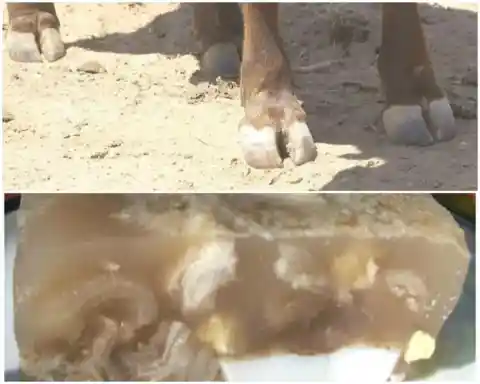
Nowadays, the dessert is still made in certain parts of North America. If you don’t believe us, do a Google search, and you’ll find plenty of calf foot jelly recipes available online. Some prefer to add sugar to make it deliciously sweet.
Lobsters Weren’t Classy
Lobster is currently considered a fancy food item. But during colonial times, these crustaceans were a dime a dozen. Having lobster regularly showed that you weren’t in the upper classes. Indeed, lobster was such a cheap food it was used as bait to catch eels.
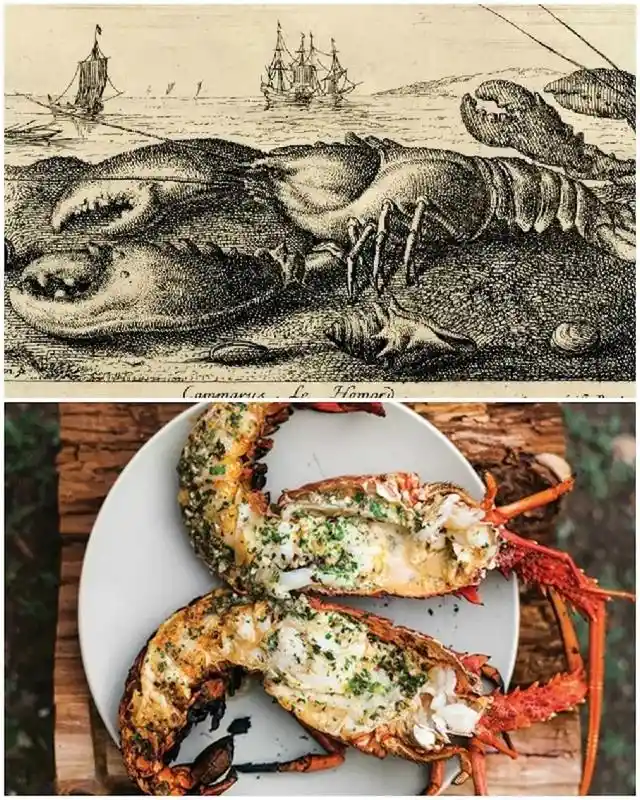
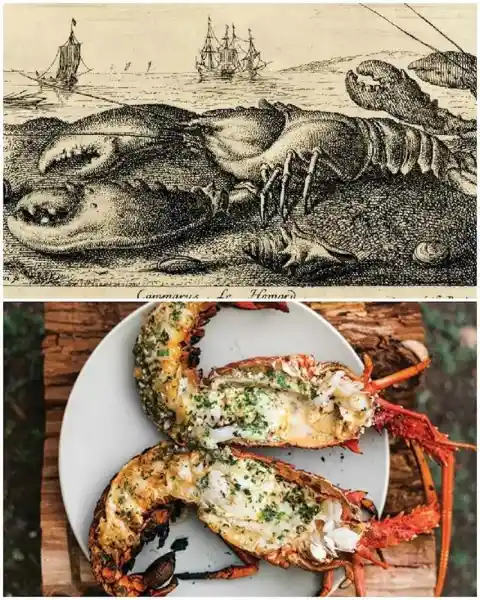
Times have definitely changed. Fast forward to now, and lobster is considered one of the most costly types of seafood anyone can eat. As you’ve probably already guessed, they are no longer used as bait to catch eels.
Clabber – Ye Olde Yogurt
It is normal to be scared of “clabber,” especially if you don’t know what it means. During colonial times, the word referred to “yogurt.” Considering that yogurt is simply fermented milk, there’s nothing to be afraid of with this one. Yet some people insist on being disgusted by sour milk despite its use in many delicious foods.
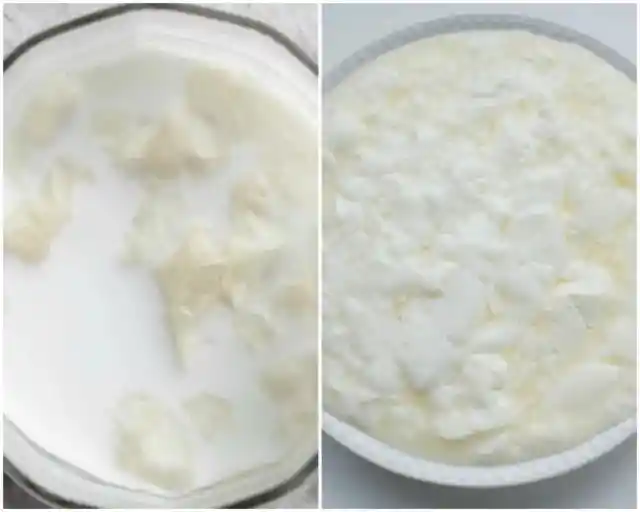
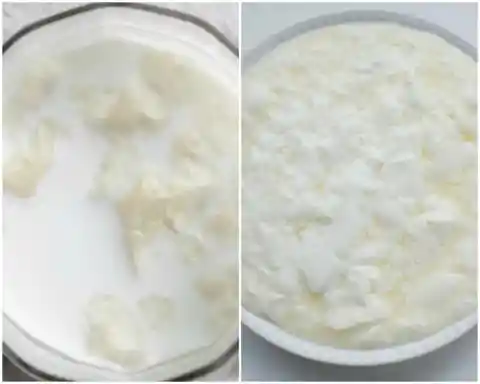
Many clabber recipes are available online, but if you want to eat it like a true colonist, prepare your clabber the old-school way and then season it with cinnamon, pepper, or nutmeg.
Stewed Snake Meat
Many Americans do not consider snake meat a staple in their soup recipes. The “icky” factor snakes have prevented them from being eaten regularly in most households. However, such was not the case during colonial times when food scarcity stopped people from being picky with their food. Back then, everyone ate anything they could get their hands on, including snake meat.
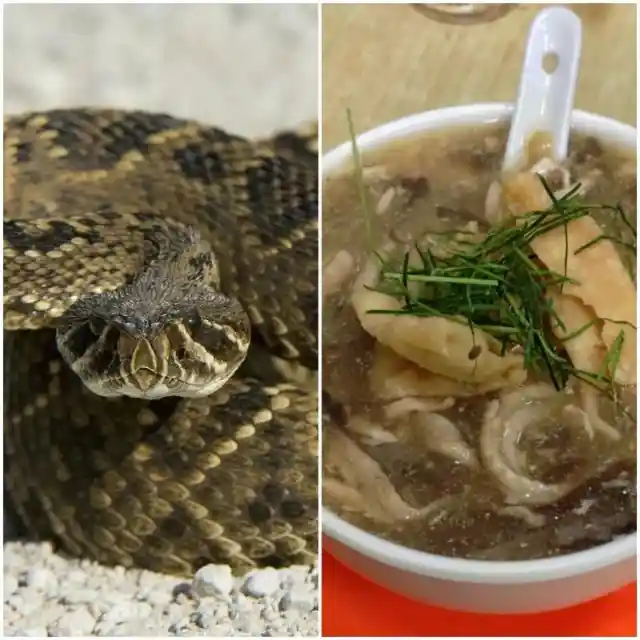
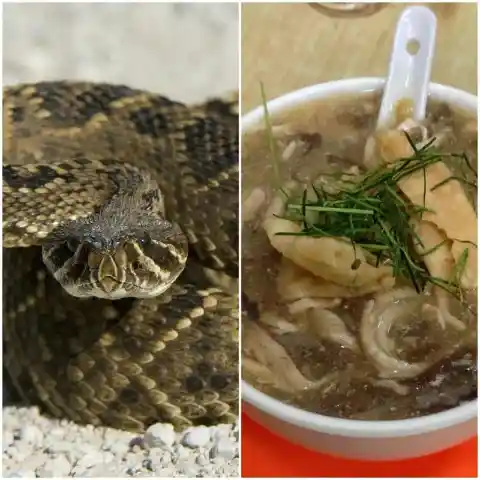
Snake meat is tasteless and similar to fish in texture, so people added chunks of snake meat to soups. In Asia, snake meat is still part of the menu in numerous restaurants.
Scrapple Meatloaf
Colonists practiced nose-to-tail eating as they did not want to waste any part of an animal, be it a cow, sheep, or pig. They converted any leftover scraps into chunks of meat called scrapple. Scrapple is a meatloaf made up of different animal parts, including the brain, heart, snout, or eyes.
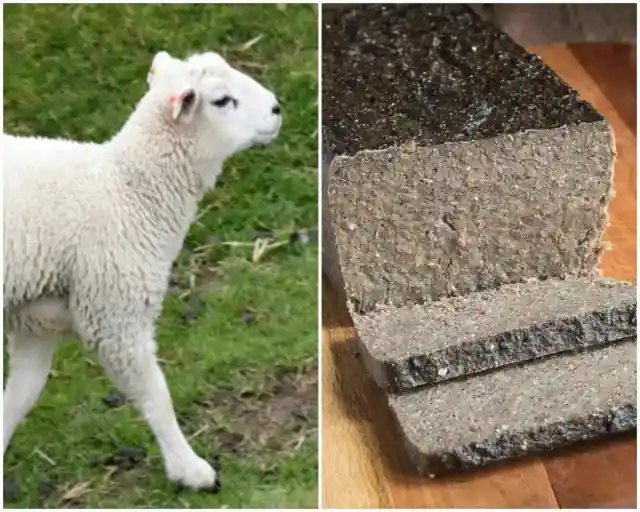
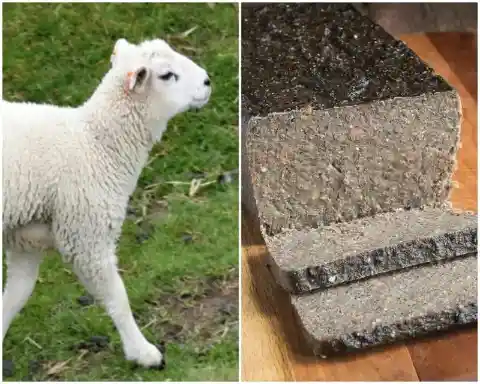
In this picture, you can see some freshly-cut lamb scrapple. Though scrapple is still made today, not all parts of an animal are used. Also, pork is the meat most commonly used when making scrapple in the 21st century.
Pigeon Pie
Pigeons were regularly eaten during colonial times – the same way chickens are now. Back then, colonists did not possess the sensitivities many now have concerning the idea of pigeons as food. As long as birds have enough meat to be eaten, they can be prepared and served on a plate.
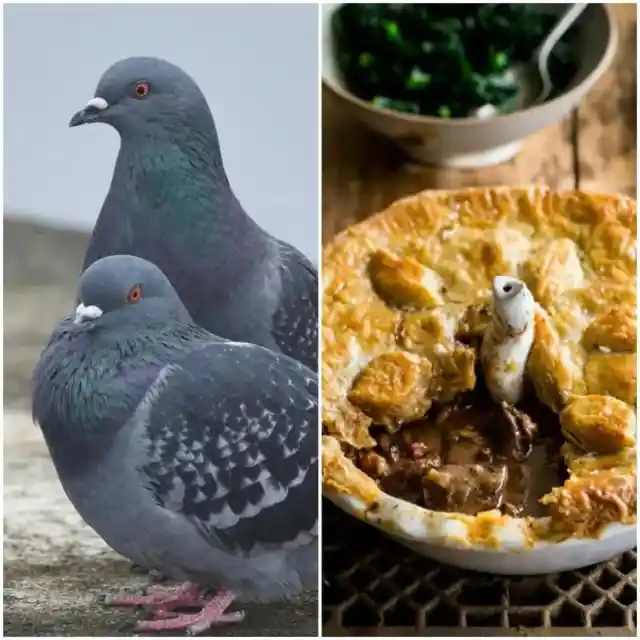
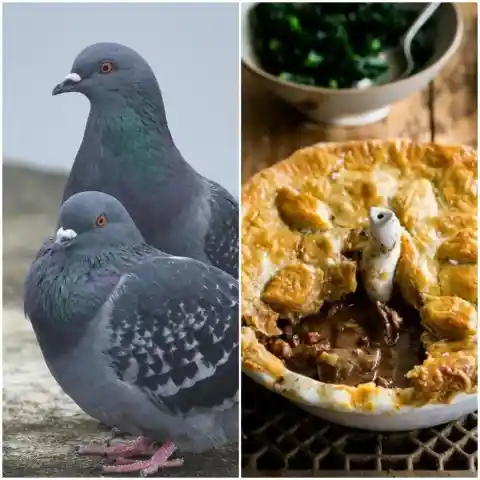
If you can consume a pheasant, you can definitely eat a pigeon. Oddly, pigeons were considered an upper-class meal due to the amount of preparation necessary to cook them.
Custard Posset
A lot of people like custard. However, some would refuse to eat it even if you pay them. During colonial times, posset was a form of custard numerous colonists consumed for dessert.


It could also be made into a delectable sweet drink that was often served during special occasions such as weddings. Many people went crazy for posset custard due to its delicious taste. We’re happy to see that not all of the food from the past was disgusting!
Snapping Turtle Soup
Currently, it's nearly impossible to find a soup made of turtle meat. But back in 18th century America, turtle soup was as commonplace as chicken soup. It was a trendy dish among the wealthy and those who belonged to the upper class. It was usually snapping turtles that ended up tossed in the broth.
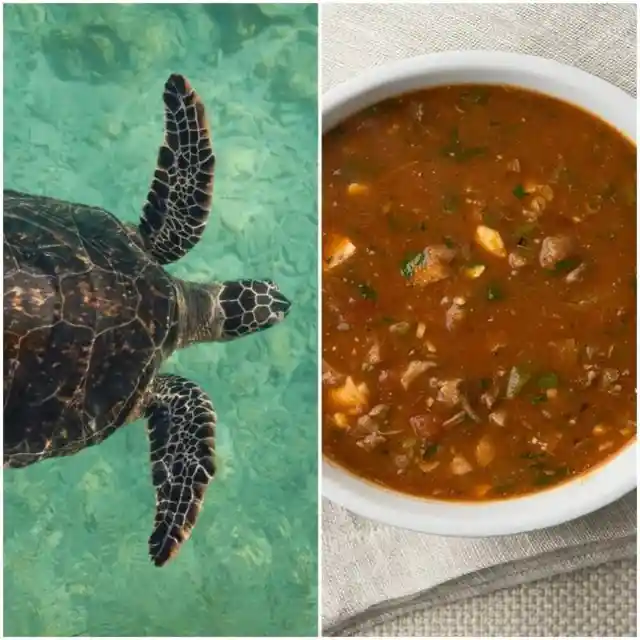
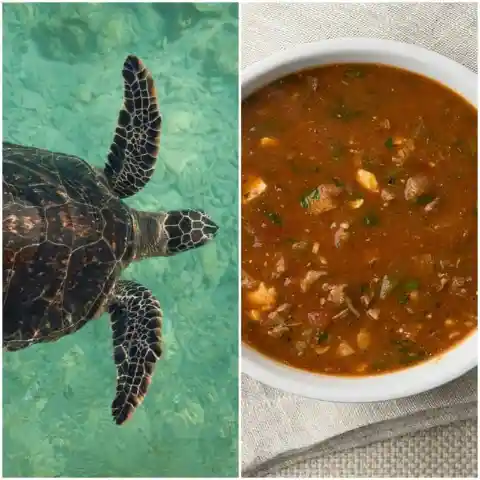
Since numerous turtle species are now endangered (due to overconsumption by humans), they no longer appear in our soups. Thankfully, by the 1920s, easier-to-prepare food items became available, so turtle soup no longer had a place on dinner tables.
Hardtack Bread
The quintessential food for soldiers in the armed forces, hardtack bread earned its name due to its ability to stay fresh for a long time. It was easy to pack and carry, making it a staple for soldiers and naval officers. Essentially, it is unleavened bread that looks like a cracker.


United States Army soldiers still receive hardtack bread in their Meal, Ready to Eat bundle. However, it’s now called crackers, not hardtack. If you’ve ever tried this type of bread, you’ve participated in a decades-old tradition.
Apple Pie
Food items consumed during colonial times were not always odd or weird. Colonial America liked apple pie despite the fruit not being native to the country. Apples thrived in the colonies because they could survive the cold winters. Early American settlers made pies out of apples to help them last longer.
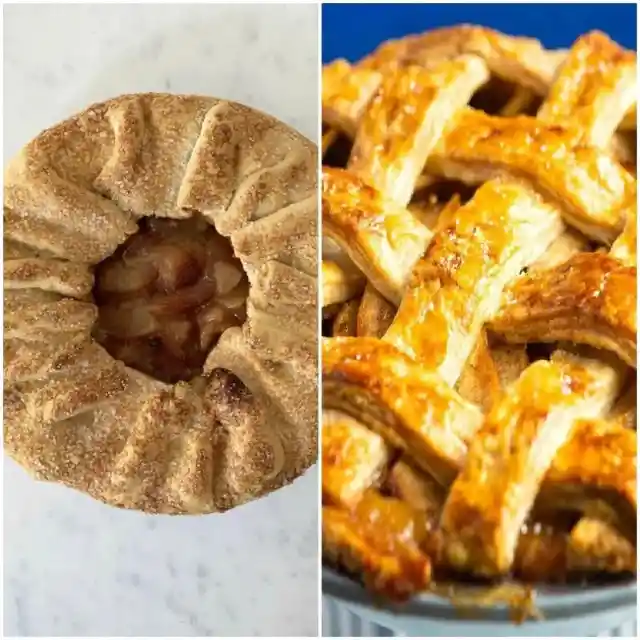
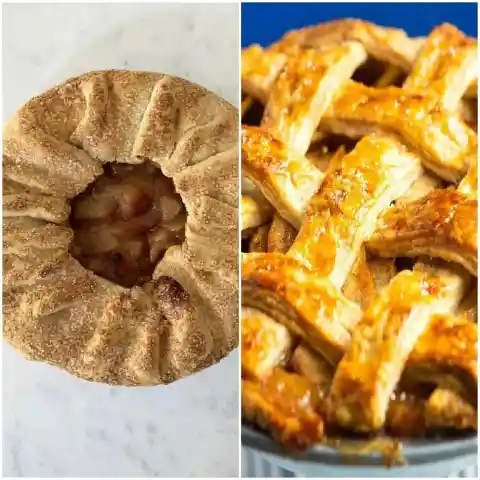
Interestingly, modern pie recipes are similar to old colonial ones. However, a key difference is that old-school apple pies were not as sweet as they are now because sugar was expensive. Colonial America seasoned apple pies with either cinnamon or nutmeg.
Solidified Bear Fat
Though colonists did not chew solidified bear fat, they did kill bears for food. They also melted down the fat and used it as a shortening for baking and cooking. Can you imagine cooking in bear fat? It doesn’t sound overly appetizing!
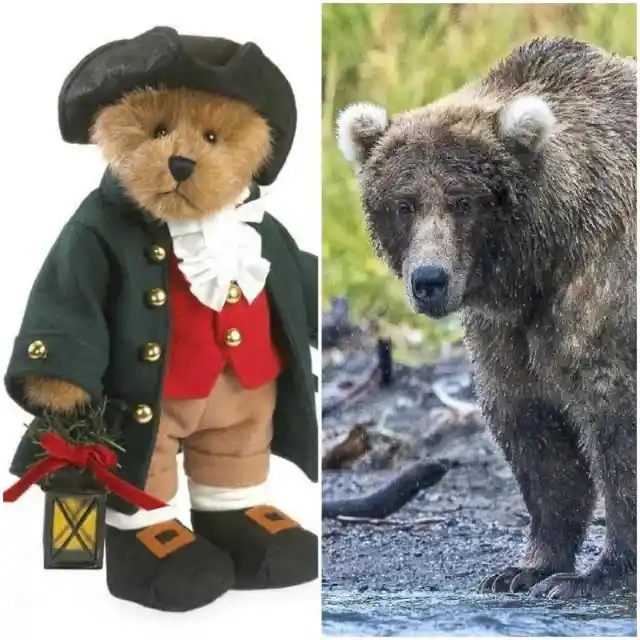
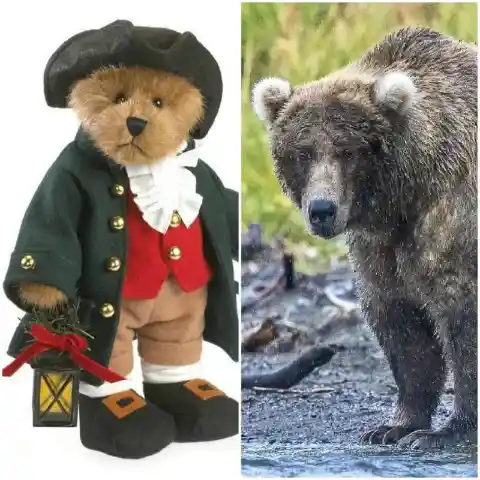
Perhaps we should put our preconceived notions aside as Colonial America found bear fat excellent for frying. It doesn’t go rancid as quickly as pork fat. Maybe that’s why many modern Americans still use bear fat for cooking.
Classic Biscuits and Savory Gravy
Biscuits and gravy are still loved by many for breakfast. It was a popular meal in colonial America – the same way it is now. After the Revolutionary War, biscuits and gravy emerged as a much-loved southern dish.
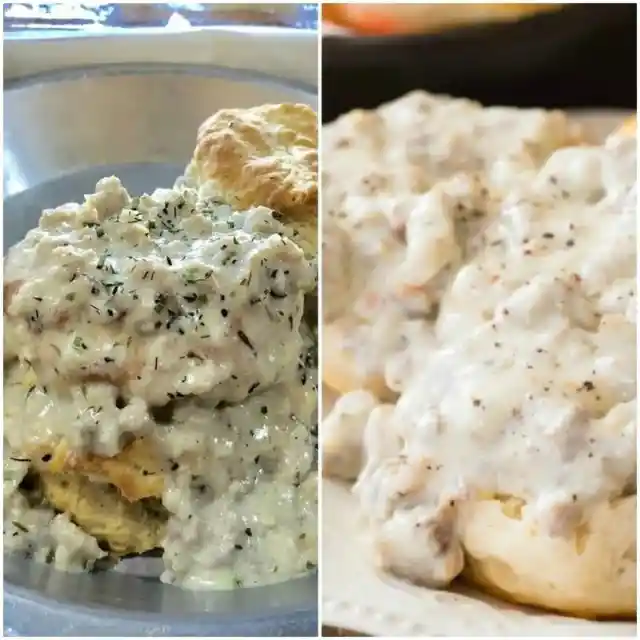
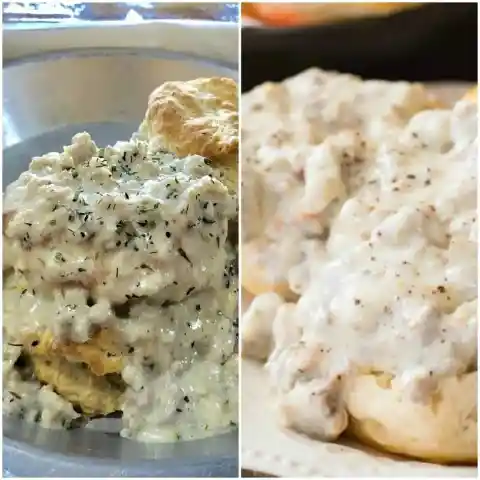
Nowadays, Americans recognize this treat for standing the test of time. Together, biscuits and gravy form the perfect meal, whether you’re an early colonial settler celebrating your victory in the Revolutionary War or a 21st-century citizen sitting down to binge-watch your favorite series.
Old-School Katchup
Colonials used condiments with their meals, and “katchup” was one of their favorites. Notice the word's spelling and be aware that no typo is involved. The “katchup” referred to is a sauce made from a combination of walnuts, mushrooms, oysters, and anchovies. It is not tomato-based the way ketchup is.
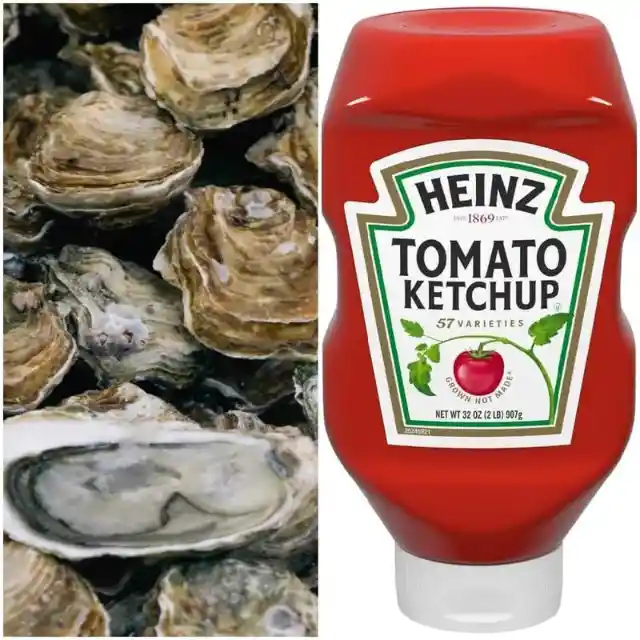
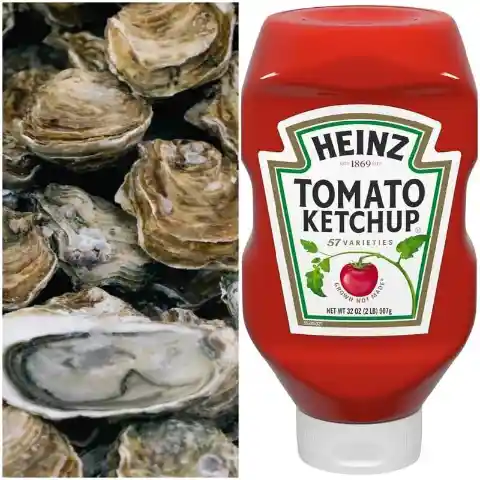
Back in the 18th century, tomatoes were thought to be poisonous (this isn’t entirely wrong as some people can’t safely eat them). It was only after the Civil War that modern-day ketchup, as we know it today, appeared in America.
Mutton Meat
Herds of sheep were extremely important to many families during the 18th century. The animals’ wool provided warm clothes to all family members. But when a sheep’s wool production dipped due to old age, its owners would eventually slaughter it. So the meat – mutton – became the sheep’s final gift to its colonial household.
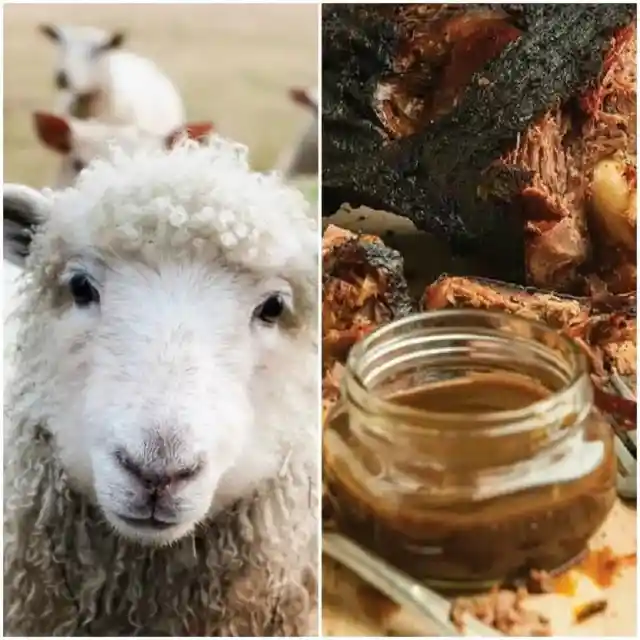
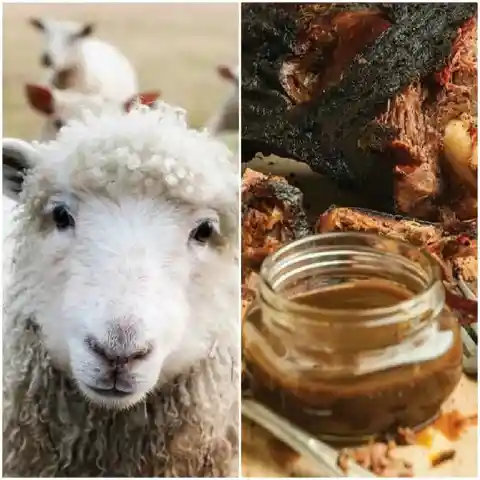
The remaining parts of the sheep would then go into scrapple, which we learned about earlier. Nowadays, mutton is still a popular meat. Essentially, mutton is meat from a mature sheep rather than a lamb.
Pease Porridge
Pease porridge is more than just a meal mentioned in nursery rhymes. It was also a popular dish enjoyed during colonial times. Pease pudding consisted of boiled legumes, ham, or bacon – ingredients that were plentiful at that time.
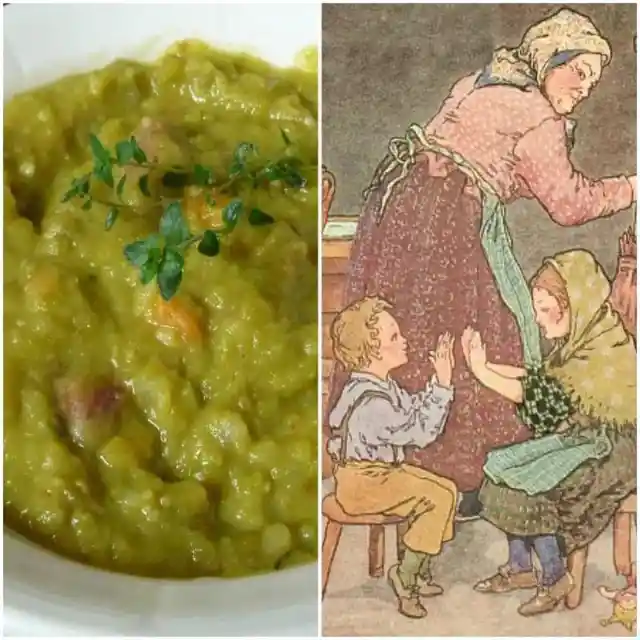
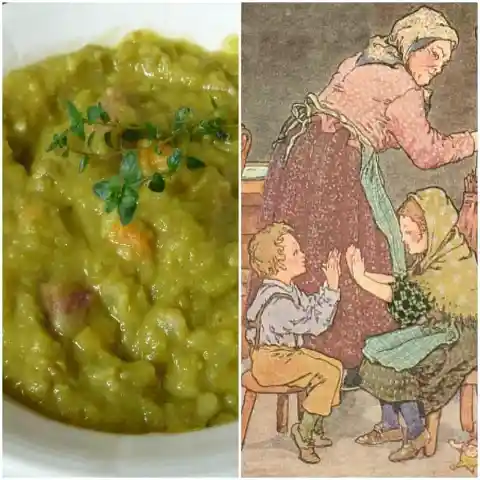
Its current version is split pea soup. This dish is currently popular and can be cooked in the same manner as it was during the 18th century. Ask any Brit, and they will tell you it is one of the best things to eat during the cold winter months.
Squirrel Meat
Rodents were also plentiful in colonial America, so squirrels were considered a delicacy. Colonists living in largely unsettled parts of America trapped and consumed squirrels to survive. They then roasted them over an open fire. Honestly, that makes the meal sound a little less awful to us!
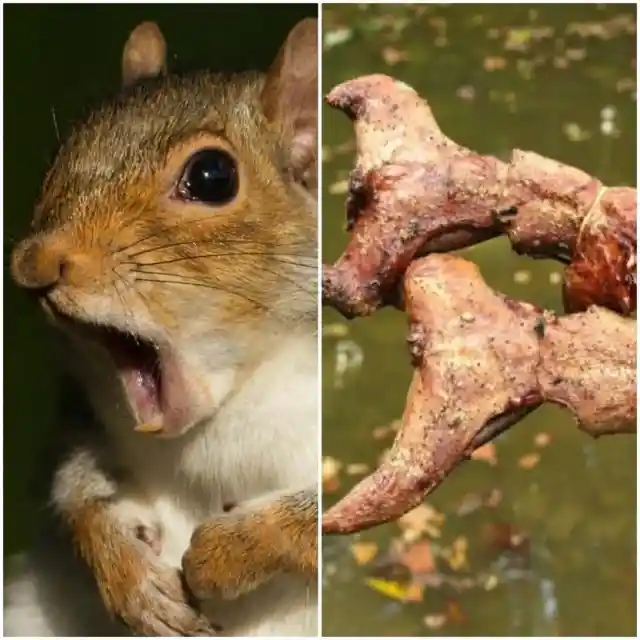

Squirrel meat was sometimes also placed in pies and stews. They might even be fried if enough fat was available. In Connecticut, hunting for squirrels was a pastime a lot of people enjoyed.
Swan Meat
Swans are elegant and beautiful creatures that were considered fair game during colonial times. Fortunately, swan meat is not consumed these days, but they were regularly put in stews by colonial Americans.
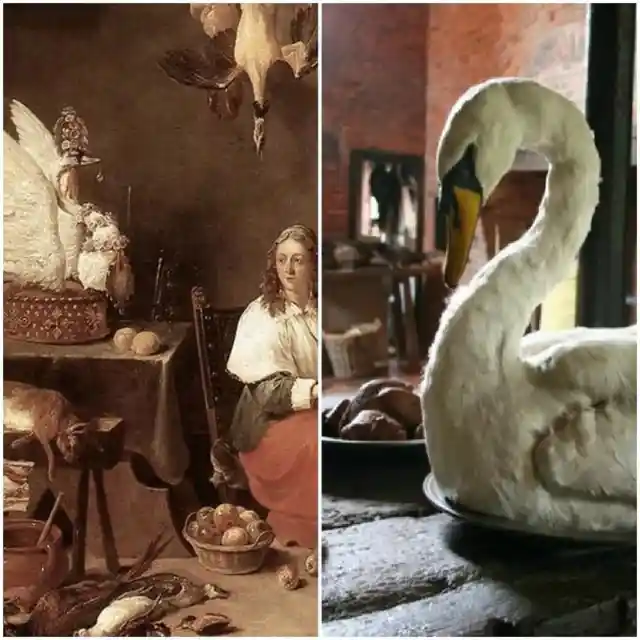

Technically, swans are similar to geese. We eat the latter most of the time. Do you think it’s time to put swans back on the menu? Besides stewing, they can also be roasted. However, the more we think about it, the less convinced we are that we should eat these graceful creatures.
Delicious Syllabub
Syllabub is a whipped cream dessert that looks like a custard. It was a favorite among colonial Americans. If you want to make some, you must start by curdling milk with wine, cider, or another form of acid. Sweet white wine was another popular choice during colonial times.
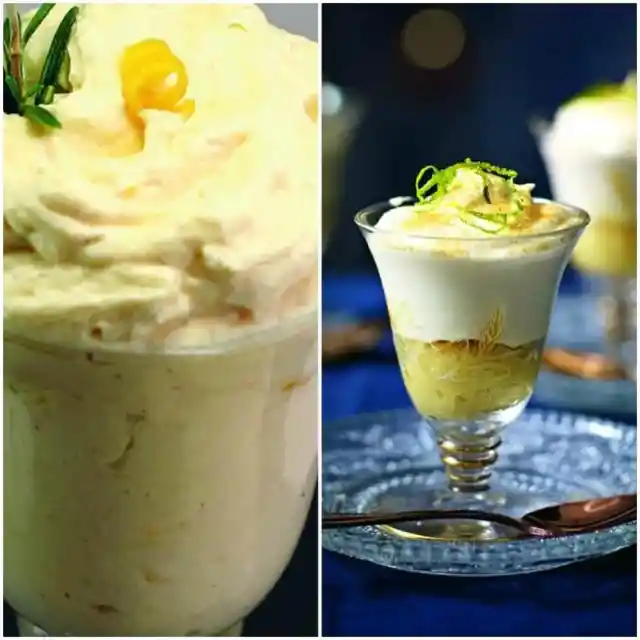
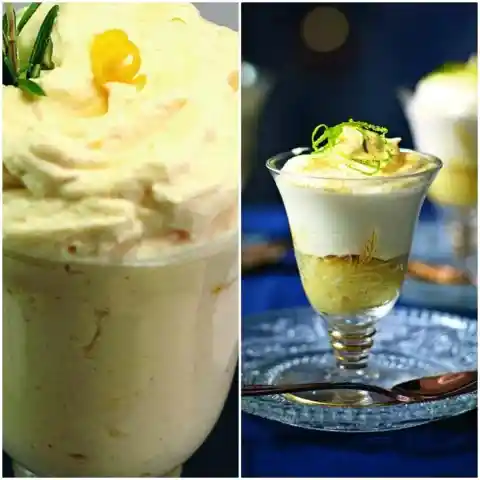
Believe it or not, syllabub is still made today. There are tons of recipes available online, so feel free to look one up and give it a go. Why not try your hand at making this tasty old-fashioned dessert this week?
Stomach Lining
It is not as gross as you think it is. The stomach lining of an animal is called a tripe. You may have heard the term from your mother as she may have threatened that she’d make you eat it (along with liver). The truth is that tripe was very popular in colonial America. It comes from the soft lining within the stomach of a deer or cow.
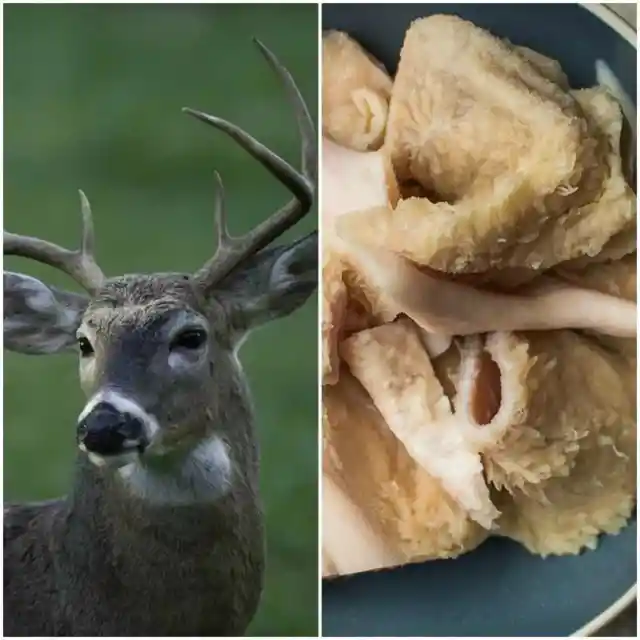

Tripe is a healthy food as it is rich in minerals such as selenium and zinc. It also contains vitamin B12. We take supplements now, but eating tripe is how colonial America maintained good health.
Classic Porridge
Porridge was a staple breakfast during the 18th century. It was convenient to make, and the ingredients were easy to find. These factors are, perhaps, why porridge remains popular to this day.
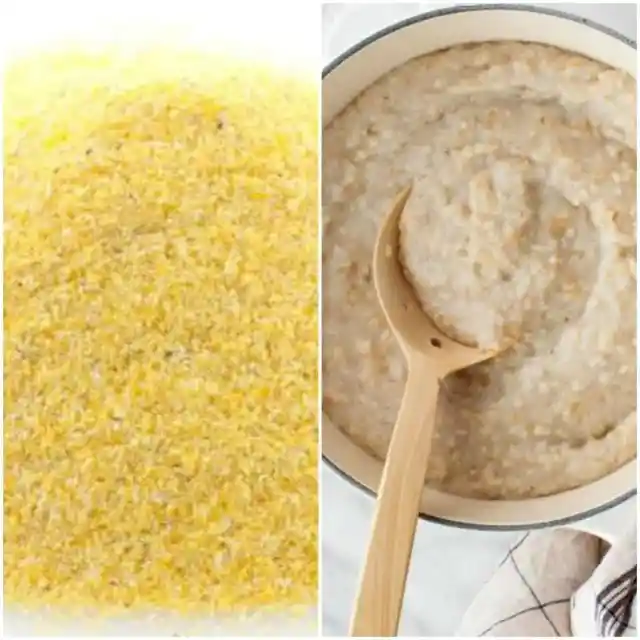
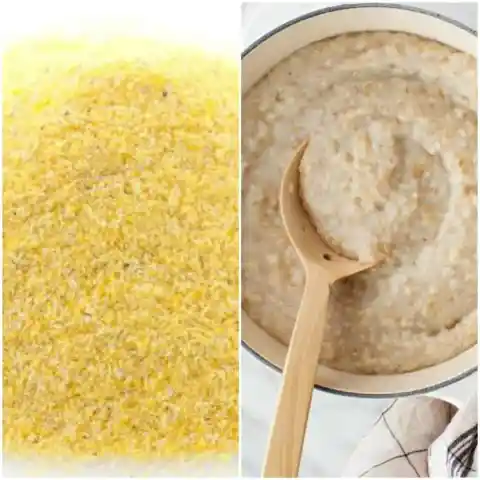
In colonial times, porridge was made from ground corn. However, any ground-up vegetable combined with water or milk can be made into a porridge. A common type of porridge that is as popular now as it was back then is oatmeal. But as we’ve learned today, not all porridge comes from oats.
Ash Bread
Slavery, sadly, was a part of southern colonial America. Enslaved people made unique food using the scarce resources they had. Their most famous dish was ash bread or ash cake. It was a corn-based food item baked in ashes from a fire.
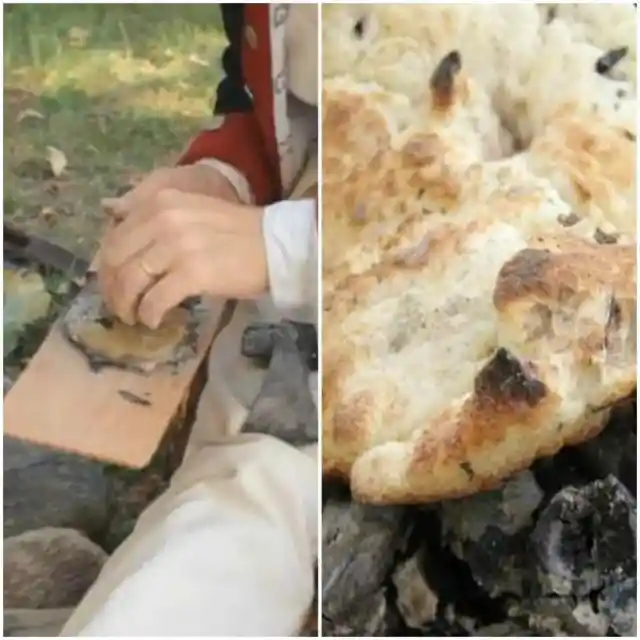
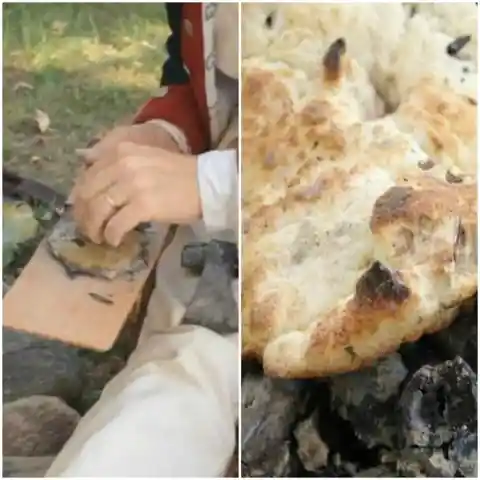
Ash cake recipes are still available online. It is a much-beloved food item among outdoor enthusiasts as it’s an easy meal to prepare while camping in the wilderness. Interestingly, it is similar to a traditional Australian dish called “damper.”
Molasses for Days
Molasses was a common ingredient in many dishes during the colonial era. It is a brown, thick syrup produced while refining sugar cane. It was a central ingredient in rum until the United Kingdom passed taxes on molasses sent to the new colonies in America. Excessive taxes like this led to the birth of the American Revolution.
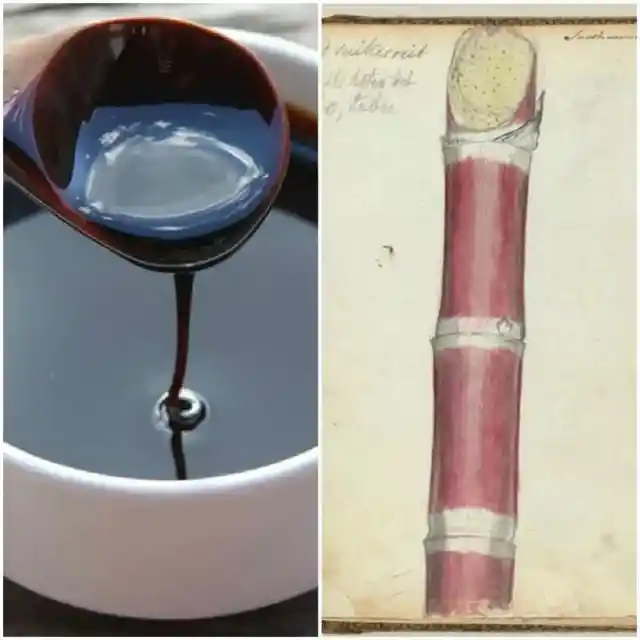
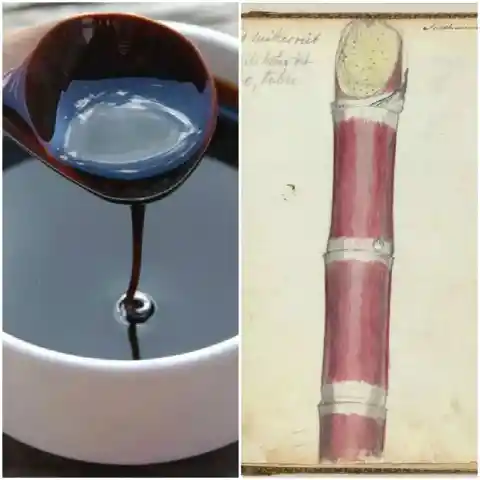
When molasses was taxed, a lot of colonists discovered different vices. Since then, molasses has yet to regain the popularity it once had.
Poisonous Pokeweed
Few people have heard of pokeweed. However, the plant’s leaves, berries, and roots were actually used medicinally by colonists and Native Americans. Pokeweed can treat health conditions such as coughs and headaches. Best of all, pokeweed can be eaten.
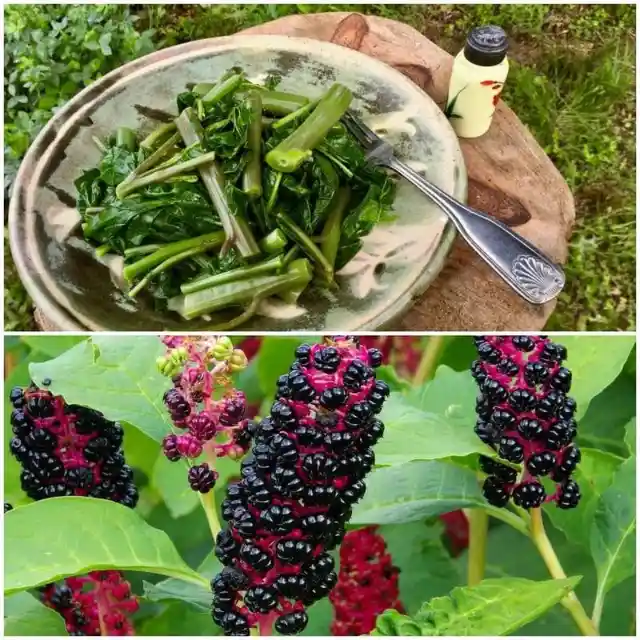
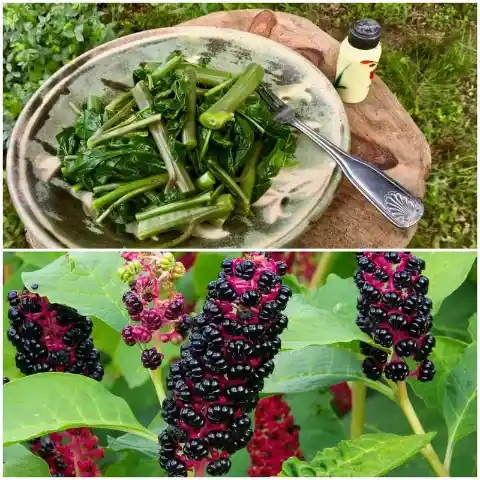
Pokeweed is a valuable plant that has a lot of uses. Though it may be toxic if consumed raw, people only had to boil its shoots and leaves to remove the toxins and make it edible. Still, we recommend proceeding with caution!
Pig Intestines
Colonial Americans of the lower classes regularly consumed food made from pigs. These food items come from every part of the animal. Specifically, chitlins or pig intestines were a popular meal among the southern colonies.
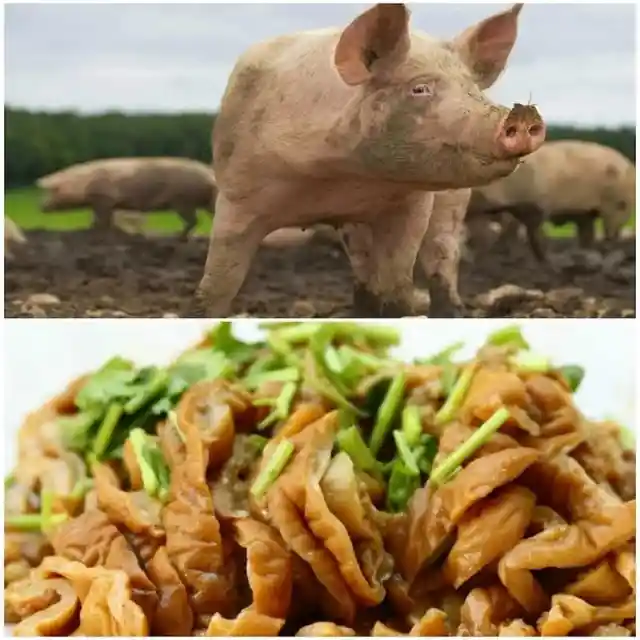
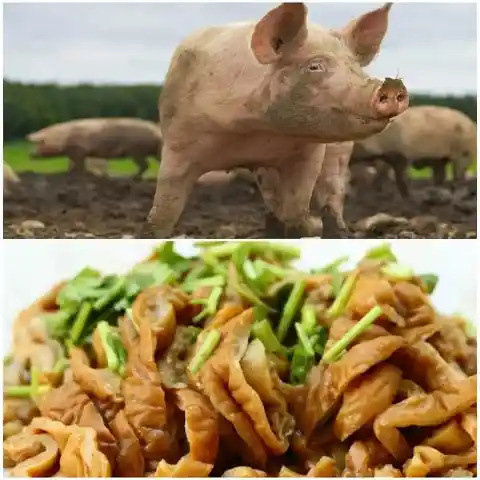
Chitlins can still be found in various butcher shops but are known as chitterlings. Boiling and frying are the most popular methods for cooking them. Chitterlings are best served with hot sauce or vinegar.
Chicken Livers
We’ve learned that the lower classes had the best food items in colonial times because they used all parts of the animal. Their aim was always to stretch the quantity of food they had available. When using chicken, for example, they made sure to eat every organ, including fried chicken livers.
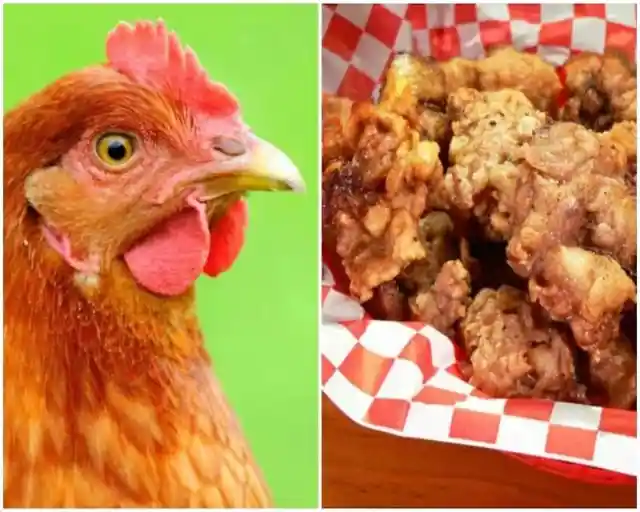
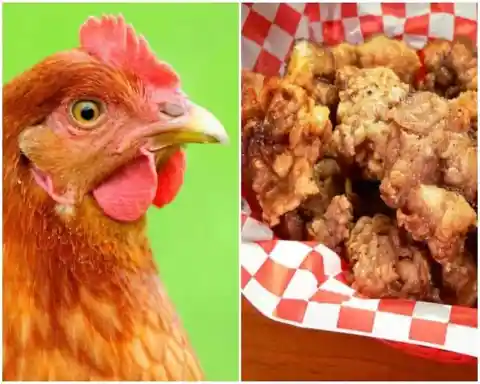
Chicken livers are healthy food items because they are rich in minerals. It is a great delicacy, especially for the adventurous palate. Try them fried with onions and sautéed mushrooms.
Opossum Steaks
Opossums are America’s sole marsupial and are native to North America. They are related to kangaroos and were loved by colonists but not because of their cute fluffy faces. Instead, they were adored for how they tasted when roasted. Indeed, opossums were famous within the colonies.
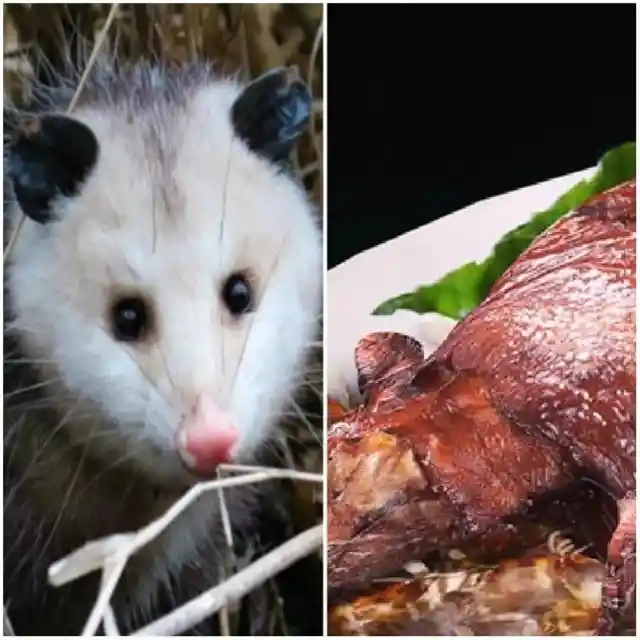
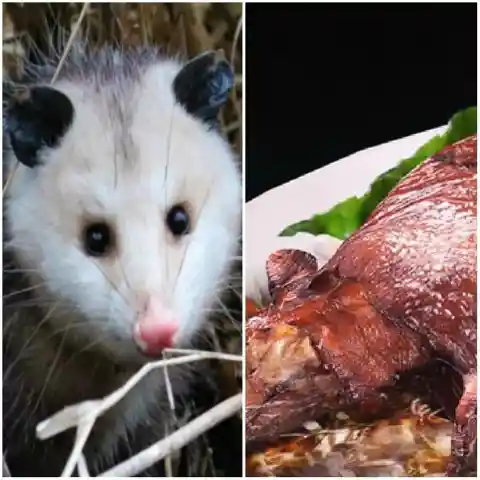
Now, opossums are only seen as roadkill or noisy intruders at night. They no longer hold the title of a coveted dinner-time delicacy, and we hope it will remain that way. Can you think of anything worse than chowing down on a beady-eyed opossum?
Raccoon Ribs
Raccoons are now referred to as trash pandas, but they were once a delicious food source for colonial Americans. Back then, raccoons were trapped and cooked the same way squirrels and opossums were. As you might have guessed, it was mostly the lower classes eating the trash pandas.
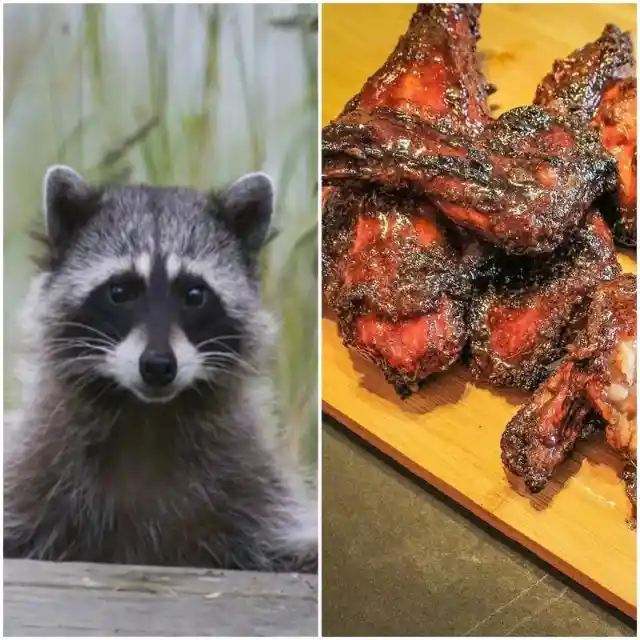
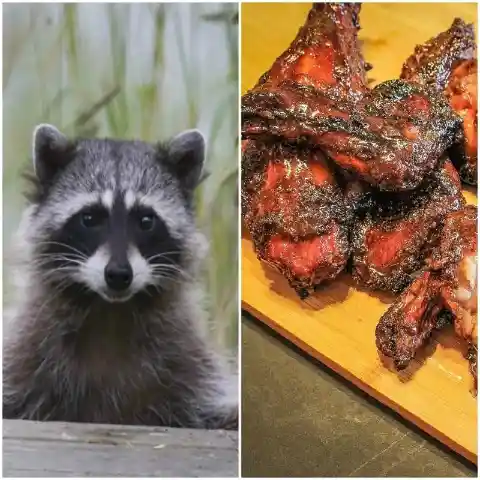
Raccoon meat is still consumed in various parts of the United States. Its meat has been described as akin to chicken’s dark meat and is somewhat greasy. It can be boiled, roasted, stewed, or eaten along with vegetables. That’s a hard pass from us!
Comforting Cornbread
Colonists consumed a lot of delicious cornbread. However, not many know that this delectable bread was the staple diet of Native Americans. Corn was common among their tribes and was grounded up to become a meal and baked to become bread.
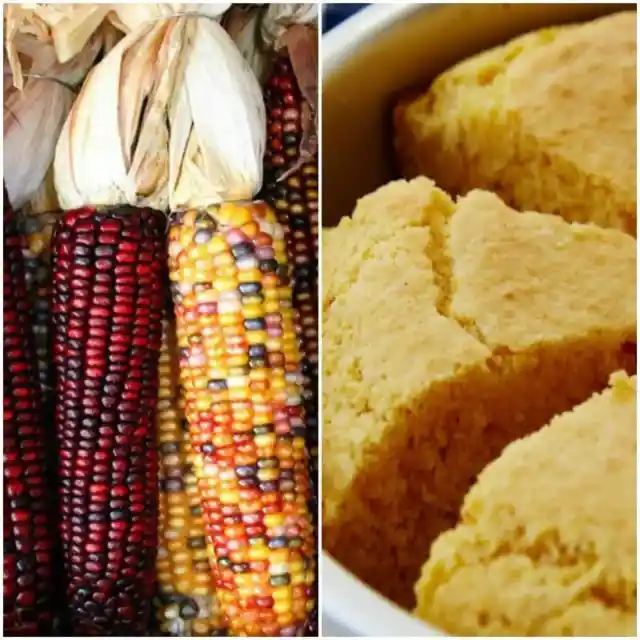
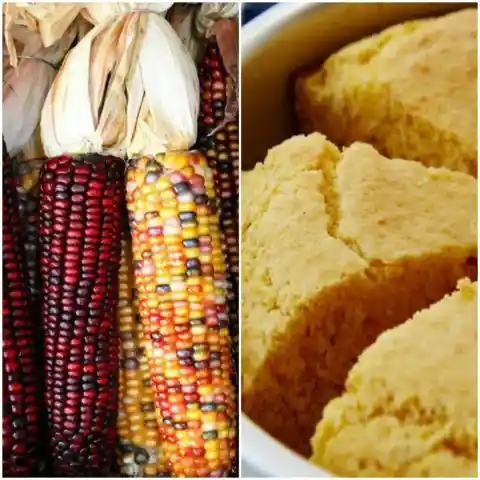
Colonists soon adopted this Native American diet, adding beans and squash on the side. Cornbread is one of the few entries on this list to still be popular today. That’s probably because it’s so comforting, filling, and delicious (unlike trash panda steaks).
Cakes Made of Pepper
Peppercorns made their way into Europe during the 18th century. Since the spice was popular in Europe, it was similarly adopted within the American colonies. Though pepper is not commonly placed in sweets, colonists used it when baking cakes.
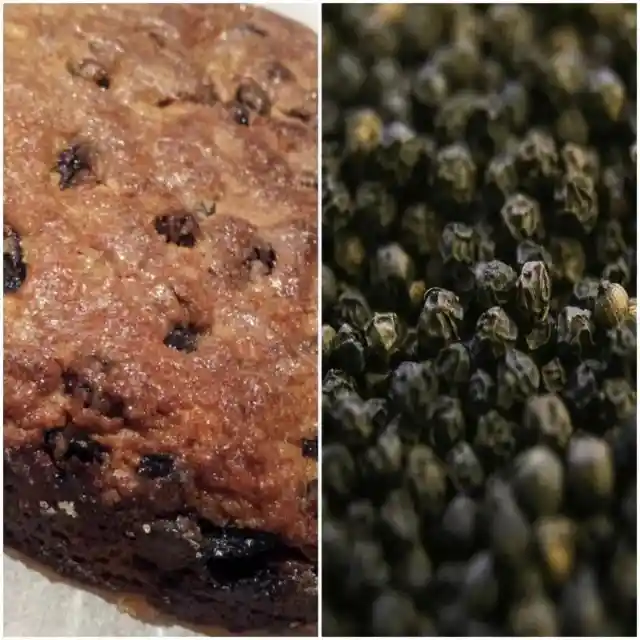

Cakes made of pepper were reportedly delicious and would last for many months according to Martha Washington’s Booke of Cookery. Of course, the cake had to be baked at the appropriate temperature. Since there were no preservatives back then, pepper cakes were an amazing way to ensure you could save food for the future.
Sassy Sassafras
Sassafras is a leafy green vegetable that was part of the normal diet in the colonies during the 18th century. It was usually added to stews, gumbo, and creole dishes. It was a regular part of the diet of Native Americans.
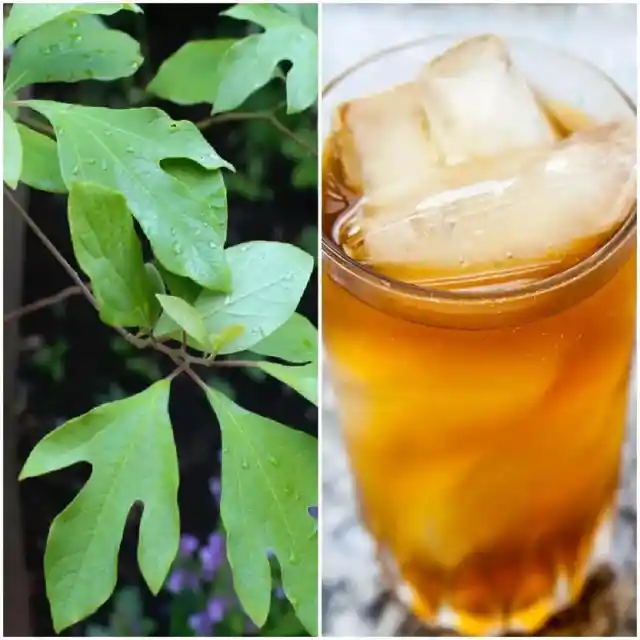
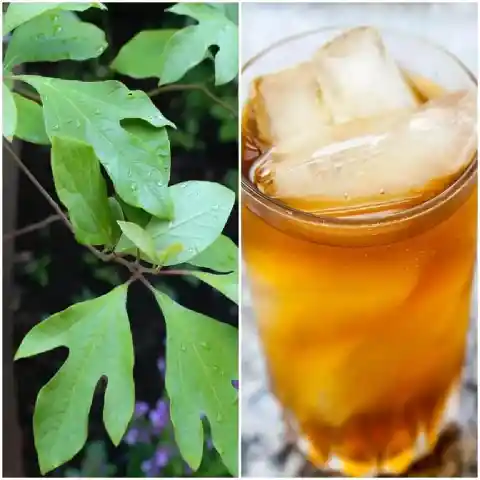
Sassafras was a remedy for syphilis in England. Eventually, the colonies became major exporters of this leafy green plant. Some believe sassafras is also effective against bronchitis, urinary tract disorders, high blood pressure, and skin problems. Currently, the US Food and Drug Administration disallows sassafras bark and oil to be used as food additives and flavorings due to its possible link to cancer.
Animal Tongues
Since colonists regularly used all parts of an animal as food, they similarly consumed animal tongues. Usually, these were boiled or roasted. Some even chopped and fried tongues.
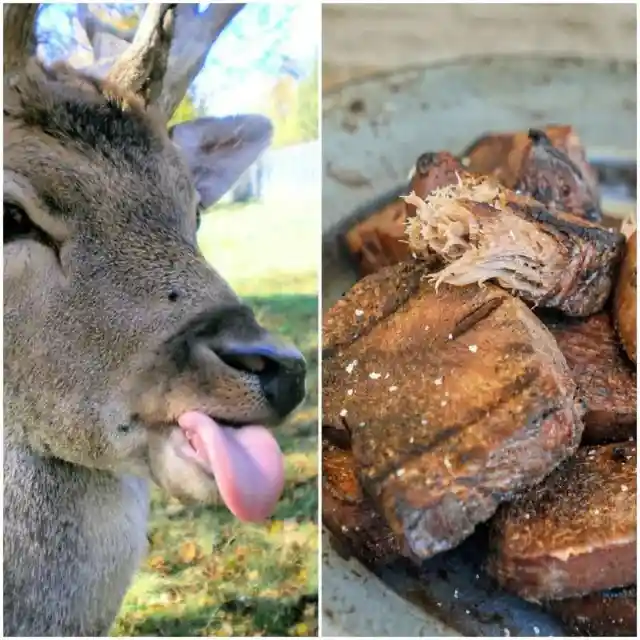
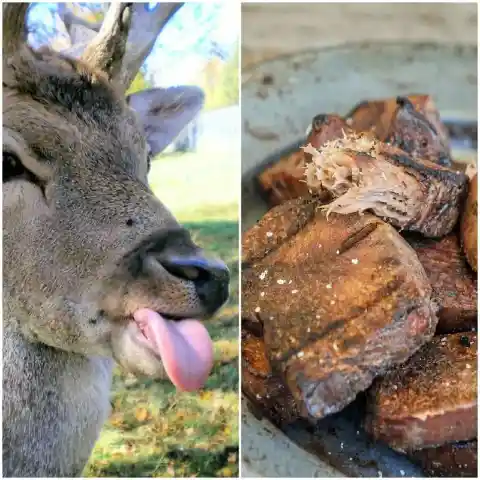
Though tongues are not used now in mainstream cooking, there are areas where tongue meat is still grilled, pickled, and braised. For example, you can get tongue-meat tacos in many parts of Mexico. Once it is appropriately cooked, it is a flavorful slice of meat. So, this is one odd dish that we do recommend!
Moose Nose
Colonists loved jellies made from melted-down parts of animals. Since there were many moose in colonial America, jellied moose noses became a favorite delicacy. This food item was created by boiling a moose’s upper jaw. The meat is then allowed to sit overnight in broth.
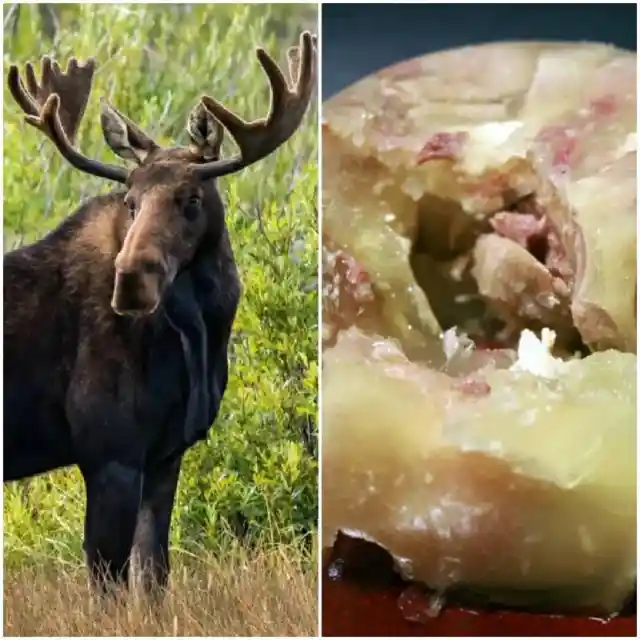
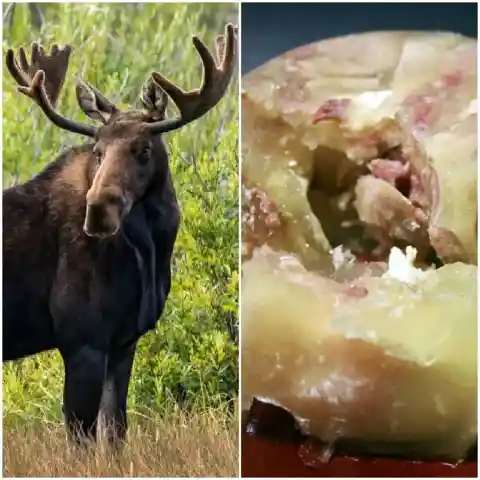
Moose nose jelly recipes are available online. The taste has been described as complex, while the texture of the meat is gamey. Some believe that this food item tastes a lot like corned beef. Feel free to make moose nose jelly if you ever come into some moose meat! Fortunately, noses from other animals, such as cows and pigs, will work if you don’t have access to moose.
Savory Salted Fish
Salting is a traditional way to preserve meat for long periods. Salt functions as a natural preservative and salted meat can last for many months once stored in a cool basement environment.


Besides fish, other meat products can also be salted, including pork, beef, and venison. Such meats were central to helping colonial families make it through the long, hard winters. While it certainly isn’t the grossest dish on this list, we’re still glad we don’t have to resort to salted meat in winter.
Umble Pie
Umble pie is another dish lower-class American colonists loved. It came from animal leftovers, specifically their innards, and was usually mixed with fruits such as sugar, apples, and spices. Figuratively and literally, it can indeed be considered a humble pie because it was invented to ensure food never went to waste.
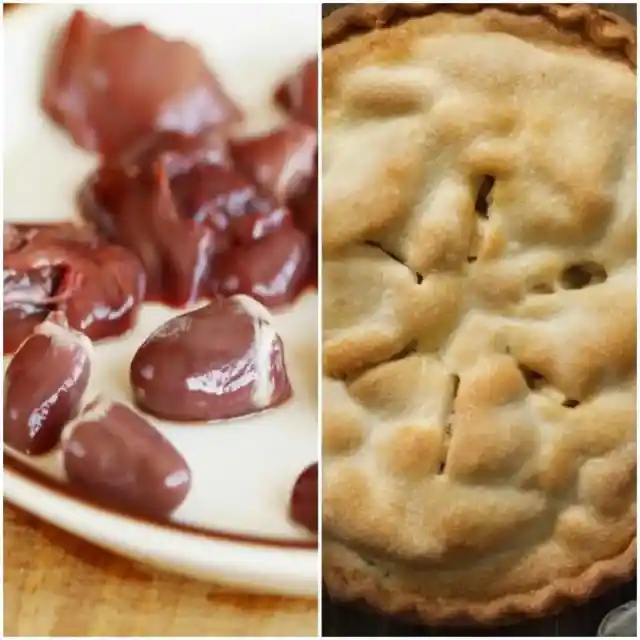
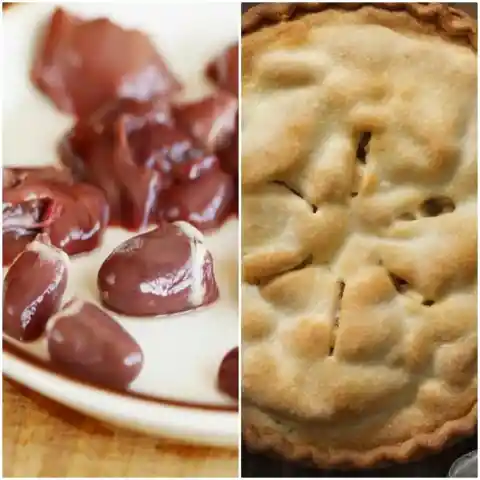
Humble pie is an old dish consumed by humans as far back as the Middle Ages. Upper classes feasted on the good parts of an animal, while the leftovers went to peasants. Thankfully, those peasants knew how to make a satisfying pie.
Corn or Flour-Based Hasty Pudding
Hasty pudding is a type of porridge or mush made from either flour or corn. It is then mixed with milk or boiling water. This pudding is usually eaten warm and was named because it can be made in haste. It was considered a famous breakfast food in England and America.
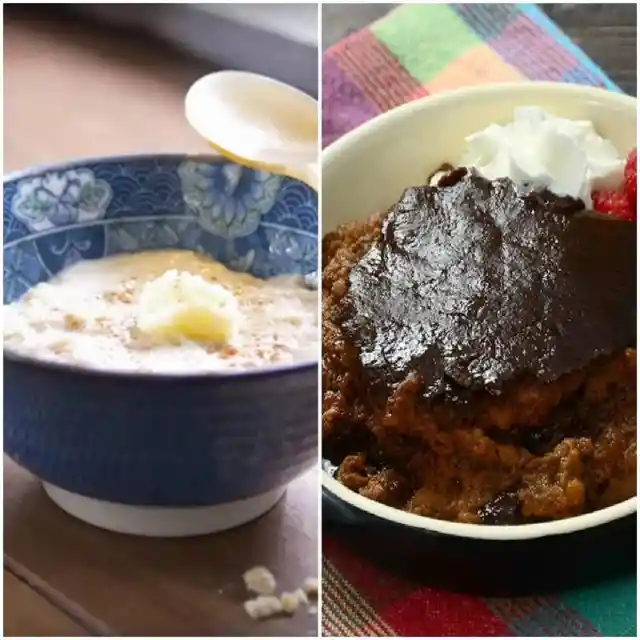
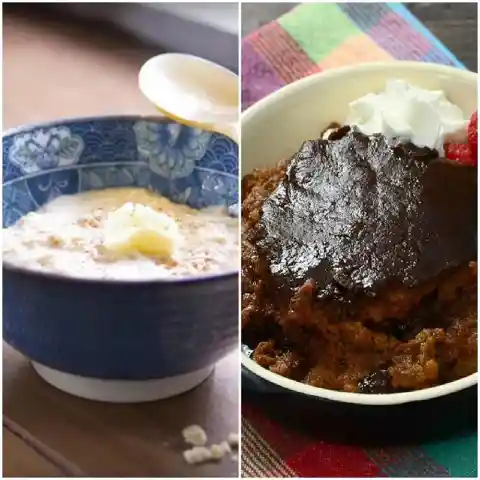
The hasty pudding made in colonial America used ground Indian corn. This is different from the pudding made in England since corn was not a major crop in the UK. This food item was even mentioned in the popular “Yankee Doodle” song during the 18th century. Its American cousin is the popular grits usually seen in the southern states.
Plum Cake
Plum cake has been around for centuries. It usually consists of berries, though specific ingredients may change depending on the region. In colonial America, plum cakes were created using numerous fruits. In modern times, we call this dish fruitcake.


Plum cakes were popular during elections; thus, the dish is also described as “election cake.” Before the Revolutionary War, these cakes were called “muster cakes” because they were made for men called to serve in the British Army. Political affiliations aside, plum cakes look good enough to eat!